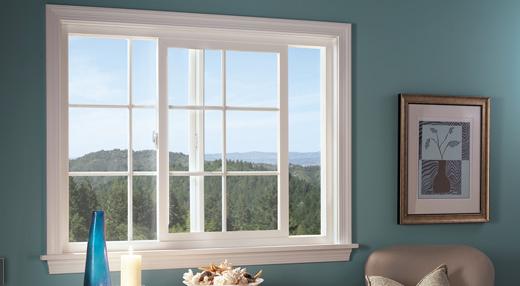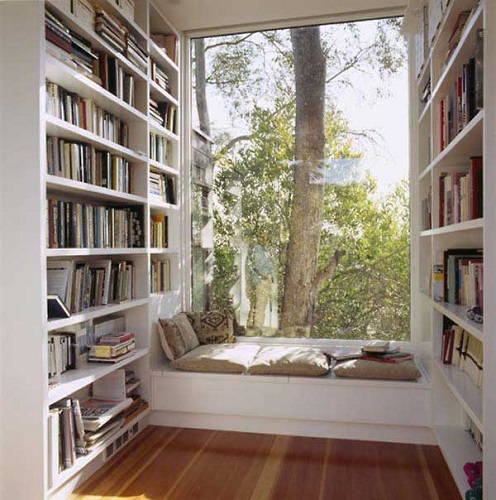Domestic windows
Contents |
[edit] Introduction
Domestic windows are commonly made from timber, uPVC, aluminium. They are available in a wide range of colours and finishes and can be purchased off the shelf in standard sizes or can be made to measure.
They can include single, double or triple glazing, and their performance can be improved by low-e coatings, or by filling the gap between panes of glass with gases such as argon.
The BFRC Window Energy Rating (WER) scheme is based on a traffic-light style A-G ratings system for energy efficiency similar to that used for fridges, washing machines, cookers and so on. An A rating indicates a good level of energy efficiency, whilst G is the lowest possible rating.
There are several different types of window commonly found in domestic buildings.
[edit] Bay or bow windows
Bay windows are multi-panel windows that project in front of the external wall line, supported by a sill height wall. Bow windows are a curved variation. They are typically used in communal rooms such as the living room, dining room, kitchen, and so on.
As they generally protrude from the exterior of the house, they have the advantage of providing more interior space. Generally, they comprise a stationary window in the middle which is flanked by either double-hung windows or casements.
Bay or bow windows allow light to enter at different angles and lateral panels can be opened to allow airflow.
For more information, see Bay window.
[edit] Stationary window
Also known as a fixed light window, this type of window is fixed in place and cannot be opened. They are often used where light or vision alone is required rather than ventilation, but they are commonly used in conjunction with other openable types of window.
[edit] Slider window
Glass is fitted in ‘sashes’ (moveable panels) that slide horizontally past each other on guide rails within the frame. These are commonly found on modern or contemporary houses.
[edit] Transom window
This is a horizontal window that is commonly mounted above a door or another window to let in more light. It can either be stationary or operational, meaning that it can be opened to allow ventilation.
[edit] Picture window
This is a large stationary window that lets in the maximum amount of light and provides external views. Picture windows are most commonly found in modern houses where ventilation is not important.
[edit] Awning window
This type of window is hinged at the top and can be opened outwards, allowing ventilation. They are often installed above, below or alongside a stationary or operating window. They are typically found in bedrooms and bathrooms, where privacy is required as well as adequate light and air.
[edit] Casement window
This type of window is hinged and can be opened outwards. They can be found in a variety of formats but are typically made in modular, standard sizes in order to keep costs to a minimum.
[edit] Sash window
Sash windows are typically found in Georgian and Victorian buildings but are still widely used in new buildings. Sash windows consist of two sashes that slide vertically up and down in the frame.
See this link for more on sash windows,
[edit] Rooflight / skylight
A dome light, lantern light, skylight, ridge light, glazed barrel vault or other element intended to admit daylight through a roof, and installed on an upstand so that it is not in the same plane as the surrounding roof.
For more information see: Rooflight.
[edit] Roof window.
A roof window is a window installed in the same plane as the surrounding roof, with a minimum pitch of 15 degrees. This is as opposed to a rooflight which is installed on an upstand, and so is not in the same plane as the surrounding roof.
[edit] Others
Other types of domestic window include:
- Secondary glazing.
- Tilt and turn.
- Pivot.
- Bi-fold.
- Louvre.
- Tilt and slide.
- Toplight.
- Sidelight.
- Clerestory.
- Multi-lite.
- Stained glass.
- Topguided.
- Sidehung.
- Dormer.
For more information, see Window.
[edit] Related articles on Designing Buildings Wiki
- Bay window.
- Bullseye window.
- Casement.
- Crittall metal windows.
- Domestic roofs.
- Dormer window.
- Double glazing.
- Double glazing v triple glazing.
- Fenestration.
- Glass.
- Glazing.
- Low-e glass.
- Rooflight.
- Sash windows.
- Secondary glazing.
- Triple glazing.
- Types of window.
- Window.
- Window energy rating.
- Window frame.
- Witch window.
- Yorkshire Lights.
Featured articles and news
The UK's Modern Industrial Strategy: A 10 year plan
Previous consultation criticism, current key elements and general support with some persisting reservations.
Building Safety Regulator reforms
New roles, new staff and a new fast track service pave the way for a single construction regulator.
Architectural Technologist CPDs and Communications
CIAT CPD… and how you can do it!
Cooling centres and cool spaces
Managing extreme heat in cities by directing the public to places for heat stress relief and water sources.
Winter gardens: A brief history and warm variations
Extending the season with glass in different forms and terms.
Restoring Great Yarmouth's Winter Gardens
Transforming one of the least sustainable constructions imaginable.
Construction Skills Mission Board launch sector drive
Newly formed government and industry collaboration set strategy for recruiting an additional 100,000 construction workers a year.
New Architects Code comes into effect in September 2025
ARB Architects Code of Conduct and Practice available with ongoing consultation regarding guidance.
Welsh Skills Body (Medr) launches ambitious plan
The new skills body brings together funding and regulation of tertiary education and research for the devolved nation.
Paul Gandy FCIOB announced as next CIOB President
Former Tilbury Douglas CEO takes helm.
UK Infrastructure: A 10 Year Strategy. In brief with reactions
With the National Infrastructure and Service Transformation Authority (NISTA).
Ebenezer Howard: inventor of the garden city. Book review.
The Grenfell Tower fire, eight years on
A time to pause and reflect as Dubai tower block fire reported just before anniversary.
Airtightness Topic Guide BSRIA TG 27/2025
Explaining the basics of airtightness, what it is, why it's important, when it's required and how it's carried out.
Construction contract awards hit lowest point of 2025
Plummeting for second consecutive month, intensifying concerns for housing and infrastructure goals.
Understanding Mental Health in the Built Environment 2025
Examining the state of mental health in construction, shedding light on levels of stress, anxiety and depression.






























